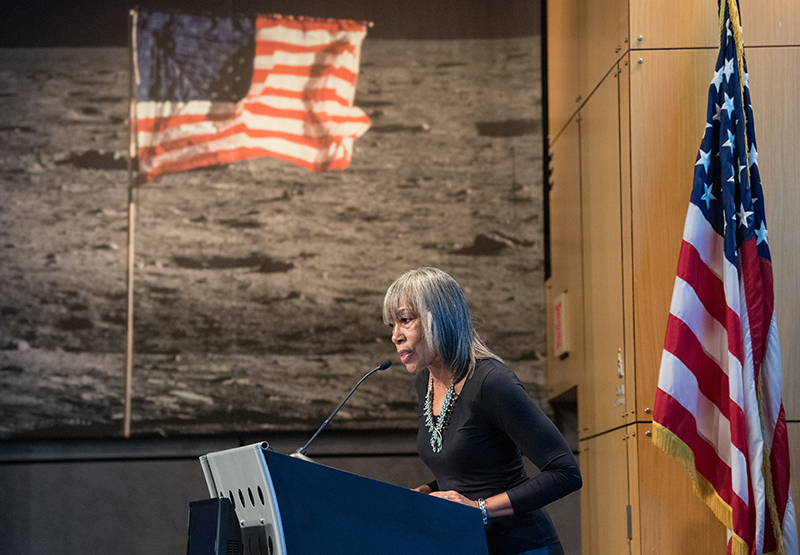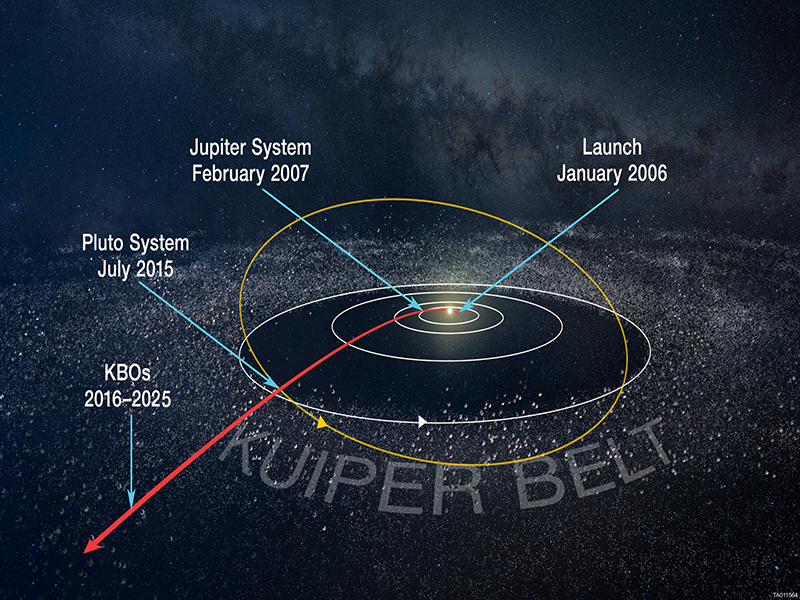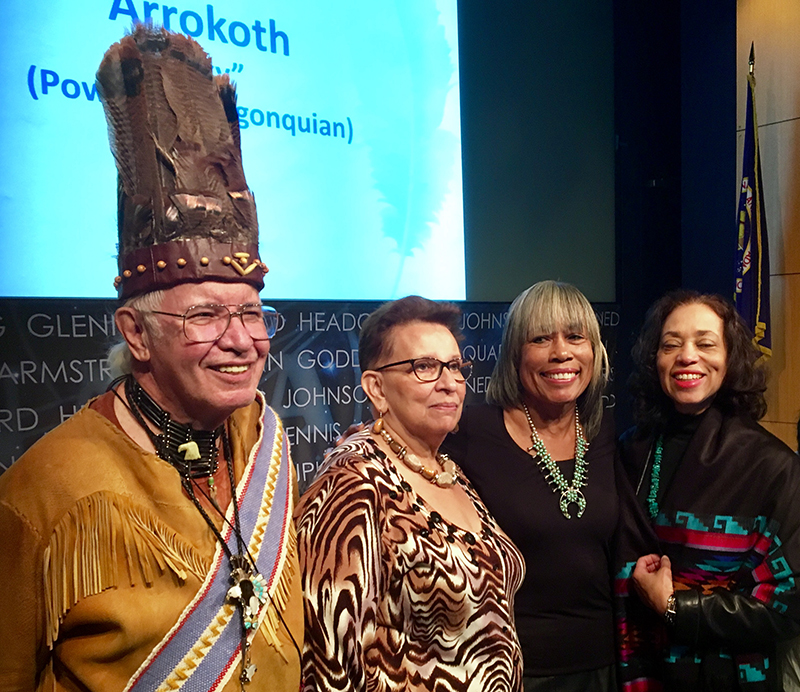Honoring her ancestors
Professor emerita helps NASA gain tribal approval for name of new celestial body

When NASA was preparing to name the farthest object ever visited by spacecraft, it asked the National Museum of the American Indian for help. The NMAI pointed the space agency’s representatives toward Phoebe Farris.
NASA wanted to name the object Arrokoth, or “sky” in the Algonquian languages spoken by the Pamunkey and other tribes in lands now known as Virginia, Maryland, and the District of Columbia. NASA approached Farris, who has written extensively about tribal communities on the East Coast, in its effort to vet and gain tribal approval for the new name.
“After I was satisfied with the authenticity of the name, I contacted several members of the various tribes to get a general consensus on their approval or disapproval of using a Powhatan name for a celestial body,” said Farris, professor emerita of art and design and women’s studies at Purdue. “NASA wanted to make sure the naming would be positive as compared to the negative Indian names for sports teams. All of the people I contacted thought it was a positive idea. I also suggested that NASA reach out to the various nearby state-sponsored American Indian Commissions”
NASA’s New Horizons team first discovered the Kuiper Belt object – initially identified as 2014 MU69 – on June 26, 2014 using the Hubble Space Telescope. After a six-month reconnaissance study of Pluto in 2015, the New Horizons spacecraft on Jan. 1, 2019 made its historic flyby at 2014 MU69.
NASA scientists believe that data retrieved from the flyby will provide new insights on the formation of planets and, potentially, on the origin of life on Earth.

Astronomical teams that identify new celestial bodies are traditionally granted the privilege of assigning a name. Quite often, the research teams choose to attach a name that is somehow connected to the native peoples who inhabited the region where the team is based.
Since both the New Horizons mission and the Hubble Space Telescope are based in Maryland, the team elected to attach a Powhatan name to their discovery. The Pamunkey Tribe and its village were significant within the original Powhatan Confederacy. Home to Chief Powhatan, the father of Pocahantas, the current reservation boundaries were established in the 1600s. It is the oldest American Indian reservation in the U.S. and has descendants living throughout the Mid-Atlantic region.
“The name ‘Arrokoth’ reflects the inspiration of looking to the skies and wondering about the stars and worlds beyond our own,” New Horizons principal investigator Alan Stern said when NASA announced the new name. “That desire to learn is at the heart of the New Horizons mission, and we’re honored to join with the Powhatan community and people of Maryland in this celebration of discovery.”
Lori Glaze, director of NASA’s Planetary Science Division, added that, “Bestowing the name Arrokoth signifies the strength and endurance of the indigenous people of the Chesapeake region. Their heritage continues to be a guiding light for all who search for meaning and understanding of the origins of the universe and the celestial connection of humanity.”
Arrokoth was not always the chosen name for the planetesimal object, however. When New Horizons conducted its initial New Year’s morning flyby of 2014 MU69, New Horizons was calling the object “Ultima Thule” after a mythical northern land in medieval European literature.
The space agency was aware at the time that the name Ultima Thule had also been appropriated by the Thule Society, sponsor of what later evolved into the Nazi Party. The German occultist group claimed that Ultima Thule was the ancient birthplace of the Aryan race. Neo-Nazis and members of the alt-right reportedly still use the name and imagery in their messaging.
NASA insists that Ultima Thule was only a temporary nickname and that it planned all along to give 2014 MU69 its permanent name after the flyby. It revealed Arrokoth as that name on Nov. 12, 2019, at a ceremony at NASA headquarters in Washington, D.C.
Farris was among the featured speakers along with her cousin, Rev. Nick Miles, the son of deceased Pamunkey Chief William H. Miles. Rev. Miles opened and closed the ceremony with prayers, songs, and drumming.
Throughout the ceremony, celestial-themed photos by Farris and paintings by Nadema Agard (Powhatan/Lakota/Cherokee tribes) were displayed on a large onstage screen, along with photos of various Pamunkey men and women from the Smithsonian and National Museum of the American Indian archives.
“The ceremony had very good vibes,” Farris said. “It was an overall beautiful feeling and people didn’t want to leave when it was officially over.”
Those good vibes represent a marked departure from the sentiments that sometimes color interactions between NASA and the Native American population.
Farris shares fellow Native Americans’ concerns over some of the agency’s projects and its use of tribal lands. However, she admits that her recent interactions with NASA provided an opportunity to learn more about its outreach efforts. That provided reason for encouragement.
“Although my views on those topics have not changed, I did gain a new respect for NASA and my ideas about space exploration broadened,” Farris said. “And NASA’s summer internships and college scholarships for Native students majoring in STEM areas made me feel more optimistic about the future of NASA-Native American relationships.”
